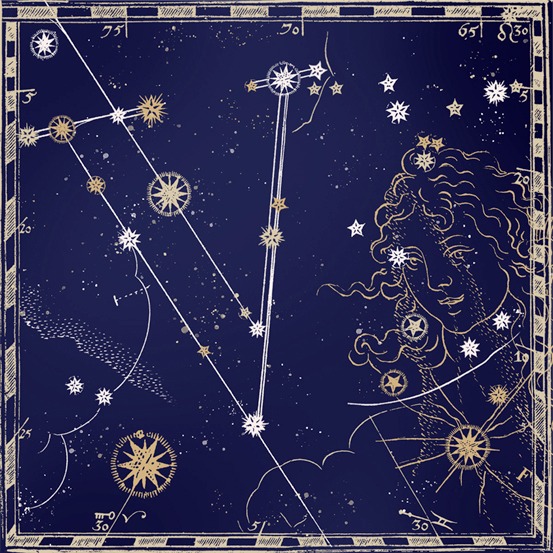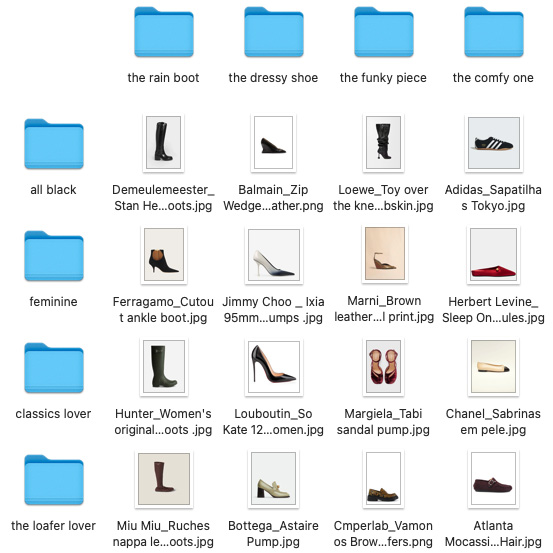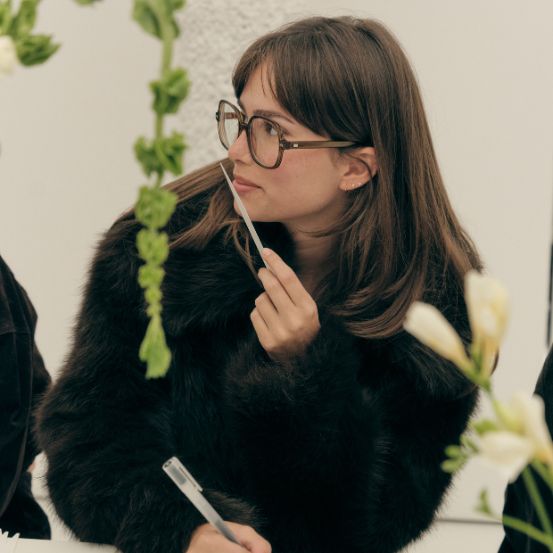The Big Book of Trends
Wonderlands, actually. Plural. Over the last 20 years, Swedish artist and illustrator Daniel Egnéus has called a multitude of cities home, including Prague, London, Berlin, Bologna, Rome, Milan, and is now practicing his art in Athens, Greece. When will Lisbon come? Soon, surely.
The plurality of his homes is directly proportional to the plurality of his work: inspired by life and everything that surrounds him, it is probably from this wealth of experiences that the dreamlike aesthetic that characterizes him is born, as if a dream had been transposed onto paper, his vivid imagination taking on colors and shapes and volumes in a limbo between the abstract and the lucid, the escape and the real, art and life. Dichotomies that also seem to characterize Egnéus, the man: without formal training in the area of illustration, his solo apprenticeship confirmed his talent and unique point of view by winning several accolades for his work and collaborations (such as BMW and Drambuie Whiskey, to mention just a few of his award-winning projects), while at the same time collecting illustrations for a series of books - including those by the renowned author Neil Gaiman -, wandering through a range of segments that seem to reflect his wandering lifestyle.
Fashion is one of these segments. Among the different clients with whom he has partnered (in addition to those mentioned above, Pepsi-Cola, Haagen-Dazs, Time Magazine, American Express), his CV also includes names such as Victoria’s Secret and Chanel. The latter was actually a commissioned work for which he flew to Havana, Cuba, to watch the 2017 Cruise show and design it on site, a perfect fit, as he mentions in the interview below, “because [Karl] Lagerfeld’s clothes are almost drawings”. This is not the only point in common that his métier has with fashion design: known for using a range of materials to bring his images to life, from inks to pencils, watercolours and photography, he combines different platforms and resources for unexpected results, just as a designer seeks his avant-garde in different textures and volumes. The end result is a whole that is greater than its parts, fragments of a perspective that comes from one man only for the admiration of the world. A bit like the interview below with Daniel: fragments of a series of experiences that are scarce to get to know the artist in depth, but enough to understand his art.
I’ve read that you’ve had no formal training in illustrating… so how did you start drawing and how did it grow into an array of artworks?
It has been a passion since I was very young. I have always loved drawing and I tried really early on to learn from my favorite artists like the french engraver Gustave Doré and the American Mad Magazine drawers like Wally Wood and Jack Davis. My dad built me a small light table and I was sitting on the floor in my room for endless hours sketching. I obviously was really bad at school since I was always drawing so I quit school when I was around 16. I never really asked myself why I draw, it has always just been a personal need and the funniest thing I know.
When did you realize: I can do this full time?
I started to work very early on. It was never really a question of “if” because it’s the only thing I really love doing. I left my small hometown and moved to Stockholm and I had endless odd jobs in factories, the post office, bookstores etc while making appointments with ad agencies and magazines and publishers. This was before internet so you had to look up the clients in the Yellow Pages phonebook and then call each one to make an appointment and then I rushed out at lunch from my daytime job in an antique bookshop to catch the subway to try to make as many appointments as possible in that short time. But I managed to get quite a lot of jobs from when I was 23 an on (having visited agencies and publishers for five years without selling anything) So it worked out pretty well, then Internet came and you could start to work abroad and contact Illustration Agents to find a rep in different countries. I’m still working with my first British agent and it has been 30 years now.
What inspires you? I’ve read that it’s life itself - but is it your relationships, your surroundings, what triggers you into drawing…?
It’s exactly so, all inspiration or ideas are mostly in the surroundings and if it’s an idea-drawing you give it an extra spin. I think it’s the same for everyone, you see something or you hear something that appeals to you and then you filter it through your own sentiments. It can be an old painting or a song or a great tree you saw by the road, or a partner of course. We filter so many things so it’s impossible to say what precisely inspires you.
It’s an escape, I try not to participate that much in social life. I am quite antisocial so I live in my own head for long periods and you can come up with the weirdest things that noone else but you find fun or interesting. Or you develop a passion for something for a month and read everything about it and then it’s bound to happen that that thing will produce images in the end.
How did fashion enter your line of illustrations? Was it always there or something prompted you to it?
I would say I really like theatre costumes and perhaps not so much fashion itself. But how to manifest characters through costumes and make them weird and beautiful is what I really love to do. I love Arcimboldo’s old masquerade costumes he did at the court of Rudolf II in Prague. It seems he just went with anything he could come up with, an endless flow of ideas and plain fun and weird beauty. Perhaps what I admire in fashion most are the volumes of clothes. I love to draw volumes in clothing and to show movement and I think that’s why I started to draw a lot of fashion. My drawings are generally my own inventions that should describe a certain feeling or attitude. But I would say that my real passion would be to do exaggerated theatre costume for the stage with huge shapes and volumes and colors.
How does the creative process change when you’re working on a project with a label, like Chanel or Adidas or even a children’s book?
I like experimenting with different styles and material so it’s very challenging to work on new areas that I wouldn’t visit normally.This process enriches my arsenal of tools and while it might be difficult at the start it always produces something new I didn’t know I could do. A client generally has some restrictions and specific requests and you get forced to think more and work more, and of course in a collaboration you always end up with new input, suddenly someone unexpectedly opens a side door which would have been hard to find on my own.
You’ve worked with a lot of brands, among them big fashion brands. How do you align your vision as an artist with the vision of a label? Was there a particular brand that was easier or most fun to work with, in the sense that it matched perfectly with your art?
I do a research on past projects and try to come up with something new that can express the value of the brand from a different angle, while at the same time it should evoke my own poetry and thoughts. I think easily the best collaboration was when Chanel flew me down from New York to Havana, Cuba for their fashion show and I just had to sit and draw and photograph live and then make a whole reportage for American Express. That went like running water because the clothes of Lagerfeld are almost already drawings.
Fashion is a big part of your illustrations. What’s your relationship with fashion and how do you approach it in your artwork?
I dress a bit cautiously because I don’t like to draw much attention to my own persona. I follow fashion for inspiration and I love and get inspired by Daniel Roseberry at Schiaparelli a lot recently. I don’t start with an image of a garment but I let the materials and textures create the shape of a garment. I never have an idea when I start, and I find the easiest way to come up with shapes is to cut out different shapes from painted paper and let the brain go with instinct.
What inspires you in Fashion?
It’s the transformational effect on people, it can inspire you to be something else. I’m really more interested in the volumes and drama for the stage like Holly Waddington that did the clothes for Lanthimos movie Poor Things. That is something that inspires me a lot, the way to evoke the character through clothes.
I saw the video for the behind the scenes of the little red riding hood book illustrations and realized you have props to draw from. Do you always look for outside references? How does that work, in practical terms?
Again that is more the theatrical part of fashion I try to convey, and many times you really need to look at object to simplify them, I love to work with weird angles so sometimes I really need to see the object in a certain perspective. Then you can elaborate the drawing and improvise and create something totally different than it originally was. Or in the case of the video you mentioned, I got a pair of shoes from 1850 to actually study how they were made, and then you end up with something else, like shoes that looks contemporary but still carries an echo of tradition of some unknown master shoemaker.
What’s the main materials you use to draw and paint your illustrations? You resort to an array of options, correct? And how does that array play into each of your paintings, meaning, why choose this watercolor or that crayon? Is it really organic?
I like to make weird textures like painting on glass and then I photograph it for example. Sometimes I pour out color and film it and then I use one frame for an image. Things that are out of your control but then you sort of reign it in, but you got a headstart with something interesting you would never have made on a paper. I do like drawing so I use a lot of ink and I have cut my own pens from reed I found on the beach and they produce an incredible ink line.
You’ve lived all around the world. Do you feel the different city you’ve lived in have inspired your illustration in different ways? How so and what differences do you spot in your work from place to place?
Architecture and clothes, people, cultural heritage and customs. They bring you different references and influences in traditions, art, museums, music, different atmospheres have different colors.
What attracts you most about a city that makes you move there - and what makes you want to move forward from it and go to another place?
The fact that I don’t know the city so it’s the unknown factor that is alluring.
When you move away from the city, are you escaping the city or the paintings you did there?
Oh definitely the people, I’m stuck with my drawings whether I want it or not [laughs]. To move away is to get rid of a lot of luggage, just like emptying an apartment and throw away some things. It’s a tabula rasa and a new beginning. You start anew but you keep the good parts that you carry with you. It’s like a video game, moving to another level but carry with you old friends.
Do you ever get tired of a particular artwork of yours?
All the time. Strangely the ones you thought were really good when you did them have a way of becoming very annoying quite fast.
Is your nomadic life an escape in itself, as well? In a sense that your life imitates your art? Or the other way around, your art imitates your life?
I think my way of traveling has become a sort of very old fashioned traveling, like Shelly or a Byron that settled down for 6 years in a country, and then they continued to travel and then the journey finished after 20 years. Mine hasn’t reached the end yet. But no doubt you become very influenced by the place you live in. You might not even be aware of it.
Do you have a favorite artwork of yours? Or an artist doesn’t choose favorites, it’s like all paintings are their children?
Absolutely not, I like some that becomes like friends and others I hate or forget about. You can’t produce a drawing everyday that will actually stay with you. I throw away lots or they remain as unfinished.
What artworks from peers do you have, if any?
I love a weird lime stone I have with a medieval Tree of Life pressed onto it by Sid Dickens.
What’s a project in Fashion you’d still like to do/pursue?
Theatre and Opera would be an extremely inspiring challenge for sure!
You are now based in Athens. When will Lisbon be a part of your life route?
As I mentioned earlier I am in the middle of my 18th century journey that has been going on for 30 years now, so you’re up next for sure!
Translated from the original in Vogue Portugal's The Big Book of Trends, published September 2024. Full stories and credits in the print issue.
Most popular

.jpg)
“Costume Art” é a primeira exposição das novas galerias permanentes do Costume Institute do Met
17 Nov 2025
Relacionados

O que lhe reservam os astros para a semana de 25 de novembro a 1 de dezembro
25 Nov 2025
 (10).png)
Luísa Sonza: “Quando a Moda vira pressão, ou regra, ou etiqueta, já não faz parte do que eu acredito”
22 Nov 2025






 (9).png)